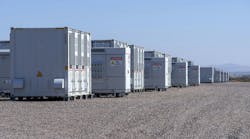Utilities are Pulling Back on Investments in a Scarce Capital Environment. Almost overnight companies have been forced to re-evaluate cash positions and take another look at their plans for advanced metering infrastructure (AMI) deployments.
By using smart meter technology that works with existing public wireless networks, utilities can spot-deploy meters on commercial and industrial (C&I) customers. In many cases, these clients are also strapped for cash and are looking for ways to cut their electricity bills. At the same time, they often carry the greatest percentage of system load and can more easily modify their energy consumption in response to load information and innovative rates.
JUST THE FACTS
According to the Energy Information Administration, residential customers make up 87.4% of the total customer base, but they are only responsible for 39.7% of megawatt-hours (MWh) sales and 46.8% of revenue. C&I, however, makes up only 12.6% of customers, but represents 60.3% of MWh sales and 53.2% of revenue.
With these numbers, it is not a stretch to say that strategic spot deployment of C&I customers is a great way for utilities to continue their AMI efforts in a down economy. While a specific utility's customer data will vary, the table shows a national average across all utilities.
PULLING IT TOGETHER
If the suggested C&I route be taken, it must be implemented by:
-
Using AMI equipment available today, not tomorrow
-
Using communications technology with in-place, readily available infrastructure accessible across wide geographic areas
-
Using data collection engines that can readily integrate into a selected meter data management (MDM) system
-
Being able to be “over-laid” by a variety of technologies when mass residential AMI installations begin in earnest
-
Being based on industry standards.
So, let's consider some of these factors. All U.S. meter manufacturers produce C&I meters that can be installed with a variety of communications media. Almost all MDM systems can accept data from a variety of different meters or communication engines. The trick is to avoid having to build out the communications infrastructure.
For many companies, public wireless is a good data backhaul choice for strategic deployment. Cellular network providers invest billions in their networks annually. They are extremely reliable and efficient for transmitting data from smart meters.
When working with public wireless providers, a utility company only needs to be concerned about whether or not a location has cellular coverage, but this is only a problem in rural service areas. So, by using available meter technology and public wireless communications, targeted AMI can be easily and quickly deployed in a cost-effective manner.
AMI is a critical piece of the emerging smart grid, which is being demanded by a variety of entities. Rather than discontinuing AMI installations while waiting out the financial storm, utilities should consider tactical deployments using readily available equipment and public communications infrastructure.
R. Bryan Seal ([email protected]) joined SmartSynch in May 2005 and became the head of Smart Grid Solutions in November 2008. He brings 23 years of utility distribution and meter engineering experience to SmartSynch from Mississippi Power Co., a subsidiary of Southern Company. He currently serves on the Board of Trustees of Utilimetrics.

